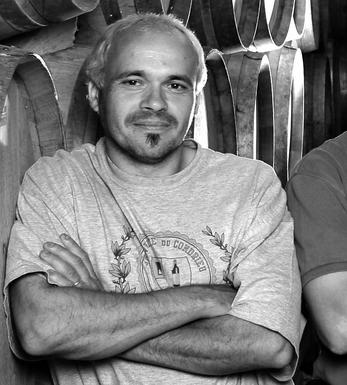
2010 Collines Rhodaniennes, Contours de Deponcins, François Villard

About this WINE

Domaine Francois Villard
François Villard has grown his tiny wine domaine from four to seven hectares and still produces a miniscule amount of highly allocated bottlings. Referred to by Robert Parker as one of the “stars” of the Northern Rhone, François also acquired a small parcel in Cote-Rotie and a few hectares in St. Joseph. Formerly a chef, François brings his complex palette to the winery to produce wines of power and grace that age for years.
The terroir of the Northern Rhone is, in a word, amazing. Fully exposed hillsides that face the East are covered with terraces first created by the Romans. The soil is made up of small gravel and decomposed schist over a bedrock of granite. The exposition allows for excellent ripening of the Viognier and Syrah grown on these coteaux and for exceptional water drainage (So much so that terraces are always needing to be re- paired.) The climate is warm with much cooler night than those found in the South.
François Villard’s strategy is to allow for the most optimal ripening possible. His wines, as a result, are rich and concentrated with complex aromas of peaches, apricots, honeysuckle, and honey for the whites and leather and spice for the reds. The whites are often allowed to develop botrytis and most of the wines pass through wood ageing for an extended amount of time to prepare them for a very long life in bottle.
The absurdly steep hillsides of the Northern Rhone mean that harvesting by hand is the only option open to winemakers. François Villard and his crew harvest in very small baskets along extremely narrow terraces, making for backbreaking and danger- ous work. These baskets are then emptied into larger boxes to be taken down the hill- sides by tractors, and in some cases, donkeys. The results, however, are unrivaled

VdP des Comtes Rhodaniens
Vin de Pays des Comtés Rhodaniens is a Vin de Pays French wine appellation that encompasses vineyard area in the Rhône-Alpes region and wines from mainly Viognier, Syrah and Grenache grapes but also from Pinot Noir and Gamay as the appellations spans further to include portions of Beaujolais, Savoie and Jura.
Within the broad regional Vin de Pays appellation of Comtés Rhodaniens there are further wine classifications for specified areas including :
- Vin de Pays du Comté de Grignan
- Vin de Pays des Coteaux de l’Ardèche
- Vin de Pays des Coteaux de Baronnies
- Vin de Pays des Coteaux de Montélimar
- Vin de Pays des Gaules

Viognier
A white grape variety originating in the Northern Rhône and which in the last ten years has been increasingly planted in the Southern Rhône and the Languedoc.
It is a poor-yielding grape that is notoriously fickle to grow, being susceptible to a whole gamut of pests and diseases. Crucially it must be picked at optimum ripeness - if harvested too early and under-ripe the resulting wine can be thin, dilute and unbalanced, while if picked too late then the wine will lack the grape's distinctive peach and honeysuckle aroma. It is most successfully grown in the tiny appellations of Château-Grillet and Condrieu where it thrives on the distinctive arzelle granite-rich soils. It is also grown in Côte Rôtie where it lends aromatic richness to the wines when blended with Syrah.
Viognier has been on the charge in the Southern Rhône and the Languedoc throughout the 1990s and is now a key component of many white Côtes du Rhône. In Languedoc and Rousillon it is increasingly being bottled unblended and with notable success with richly fragrant wines redolent of overripe apricots and peaches and selling at a fraction of the price of their Northern Rhône cousins.


Buying options
Add to wishlist
Description
Lively former chef Franois Villard built his reputation with white wines, Condrieu in particular. This superb vineyard falls just outside the rather modestly proportioned appellation but with similar steep granitic soils. Matured in 35% new oak, the 2010 is as splendidly exuberant as the man himself, imparting an unstoppable joie de vivre and defying the drinker not to indulge in a second and third glass. Excellent with lobster or any dish of a crustacean persuasioncoincidentally one of Franois areas of culinary expertise!
Simon Field MW, BBR Buyer, February 2012
Tasting chez Villard is something of a test of stamina, albeit a most enjoyable test. M Villard is not short of an opinion and he is most certainly not short of wine in an impressive portfolio. The main problem for us is that of omission.the temptation to buy everything is pronounced, such is the variety and quality of the wines, but we have to exercise rigorous self-discipline, especially difficult with 2010, a vintage which Franois extolls for its freshness and structural harmony.
wine at a glance
Delivery and quality guarantee